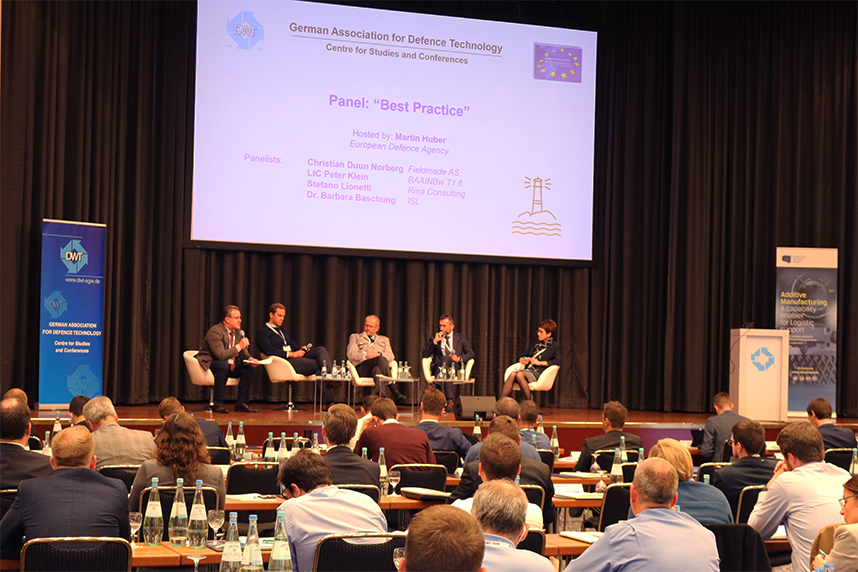Additive Manufacturing (AM) – commonly known as 3D-Printing – has been identified as a technology that could significantly reduce the logistic footprint of armed forces deployed on missions. As part of its work to enhance the use of AM in the armed forces, EDA supported the first European Military Additive Manufacturing Symposium which took place in Bonn, Germany on 12-13 October. The conference heard that AM offers unique opportunities for the armed forces especially in logistic support, but its advantages are yet to be fully embraced within the military and faces several hurdles impeding fuller implementation in defence.
In his keynote speech to the 2-day event, EDA Deputy Chief Executive, Olli Ruutu spoke on how EDA supports its Member States in their efforts to employ AM by sustaining newest technical developments and the necessary elaboration of common standards to enhance interoperability.
“AM technologies can be highly promising for enhancing defence capabilities such Logistic Support for Deployed Forces in remote or hostile environments. Having AM technologies in the area of operation might significantly impact the course of CSDP missions. Time between failure and restoring the availability of platforms, transportation and storage of significant quantities of spares can be decreased, reducing the logistic footprint of an operation” Mr. Ruutu said.
He also pointed to the important transfer of EDA’s work on AM from research and technology to capability development.

Additive Manufacturing for Logistic Support (AMLS)
Building on the results of its 2018 R&T project on AM, a new project, Additive Manufacturing for Logistic Support (AMLS) was launched by EDA within the area of Capability Development. Eight areas of activities were identified for this project, including technology aspects, training and education, as well as procurement processes. The ultimate objective is to elaborate and determine solutions in the eight areas which will foster the cooperation and enhance the interoperability among participants.
A dedicated panel on Best Practice, moderated by EDA, addressed some of the practicalities and hurdles for the AMLS project to overcome. The panel underscored the distinction that AM is not a capability shortfall but an important skill which has the potential to reduce the logistics footprint. Two EDA supported R&T projects were also presented in this panel, which are aiming to enhance the performances of ballistic protections and energic material development for AM respectively.
Emergence of Circular Economy and AM
A second panel discussion also moderated by EDA, discussed the emergence of AM as one of the key contributors to the circular economy. The event heard how AM is a means to intensify the use of materials and expand systems’ lifetime by providing on-demand solutions for repair, remanufacturing and recycling. The panel also pointed to EDA’s new Incubation Forum on Circular Economy in European Defence (IF CEED) to create common initiatives to make the most of AM’s potential for circularity: both technical and logistics aspects will be addressed in the next two years.
A first European AM Symposium
The conference was organed by the German Association for Defence Technology (DWT) and supported by EDA. Attended by over 160 representatives of industry, armed forces, academia and institutions, the event offered a unique European overview on the rapid development of AM in industry and opportunities on offer for military.